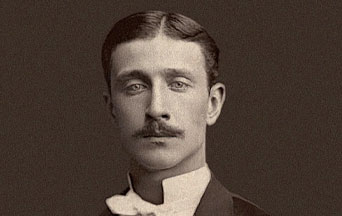
The Constituent Assembly of 1848 formed fifteen special committees to guide its work better. Among these was a committee on public instruction and education. Each deputy chose the committee to which he wished to belong. The Catholic deputies followed the lead of Count de Montalembert, who urged Catholic Party members to join the education committee with the greatest possible numbers. This would, he argued, promote the reforms that had been the reason for the founding of the Party. Montalembert’s indecision, however, undermined his authority. Count Alfred de Falloux, to Montalembert’s utmost displeasure, preferred the labor committee.
Indeed, the labor committee was destined to have significant political importance in the new republic. The new regime boasted a program of quasi-communist social reform. Major struggles between conservative and revolutionary deputies took place within the labor committee.
Soon after the revolution’s victory in February 1848, the government proclaimed the right to work. It organized so-called national workshops designed to welcome and provide jobs to the unemployed. After the initial enthusiasm had passed, many loafers and agitators joined the workshops. In a short time, they had over 100,000 members. There was no work for such a large crowd, so the government paid these “workers” one franc a day to do nothing. The workshops became centers of agitation, threatening the government and the Assembly, endangering the peace, and encouraging workers to quit. In reality, the workshops constituted a refuge for the idle, supported by the public authorities.
Both the Constituent Assembly and the government were aware of the growing danger. However, they did not dare to dissolve the workshops. The labor committee sought a compromise solution. The Count de Falloux tirelessly fought against the workshops in the committee and on the Assembly floor. Unfortunately, the committee achieved nothing until May.
Eternal and Natural Law: The Foundation of Morals and Law
On May 15, 1848, workshop members invaded the Assembly and took it over. The agitators tried to relive the scenes of the French Revolution. At that point, the government subdued them with difficulty. Finally, the politicians gathered their courage and determined to solve the problem once and for all. The Count de Falloux’s time had come. He fought tenaciously, proposed measures, tried to implement them, negotiated, and became the leader of the campaign.
On June 21, a government decree obliged workshop members to choose between serving in the army or doing agricultural labor. The next day, the workers revolted. An insurrection broke out in Paris. The government smothered the workshops with brute force. The Count de Falloux became a parliamentary hero in light of that victory.
Faced with the socialist threat, conservative parties allied and formed the so-called Party of Order. Their chiefs, called the “Rue Poitiers Notables,” gathered at the street of the same name. They included men of various political persuasions. The Legitimist Pierre-Antoine Berryer fought alongside Adolphe Thiers, the Orleanist, and Odilon Varrot, a republican who had organized opposition banquets. Montalembert represented the Catholic camp. However, the Count’s leadership was no longer indisputable because Count de Falloux’s growing prestige made him the real head of the Catholic Party.
For his part, Montalembert was moving away from Louis Veuillot. His relations with Dom Prosper Guéranger were under ever greater strain. He was drawing increasingly close to Bishop Félix Dupanloup’s guidance. Accordingly, he callously abandoned the distinctly Catholic line he had hitherto observed and lost the confidence of Catholics. The Count de Falloux surpassed Montalembert to become the lay leader of “liberal Catholicism.” In a letter to Dom Guéranger, Montalembert recognizes this situation: “I feel perfectly the isolation created around me by the envy of some and the shyness of others. But that will not stop me. After reflecting for as long as my way of life allows, I have definitively taken my side.”
 Learn All About the Prophecies of Our Lady of Good Success About Our Times
Learn All About the Prophecies of Our Lady of Good Success About Our Times
The workshop insurrection showed the willingness of leftist parties to take the government by force. In turn, it created panic among the notables. A presidential election was approaching. One candidate, Prince Louis-Napoléon Bonaparte, a nephew of Napoleon I, commanded a large following among the electorate. Indeed, Bonaparte had been elected deputy in five different constituencies. Hoping to remain unified, the Party of Order tried to take advantage of the prince’s prestige and supported his candidacy. On December 10, 1848, Louis Napoleon was elected president of France by an overwhelming majority.
Louis Napoleon could not form a cabinet since he had always lived abroad (mostly in Swiss exile). Thiers took up that task. Except for a few direct indications from the Prince-President, almost all ministers came from the Rue Poitiers Notables. Among those, Louis Napoleon chose the Count de Falloux. A Rue Poitiers Notable and a leader of the Legitimist party, Falloux was a respected politician. He also brought the support of the Catholic Party, which he controlled. He was offered the Education Ministry, accepted it, and was part of Louis Napoleon’s first cabinet.

